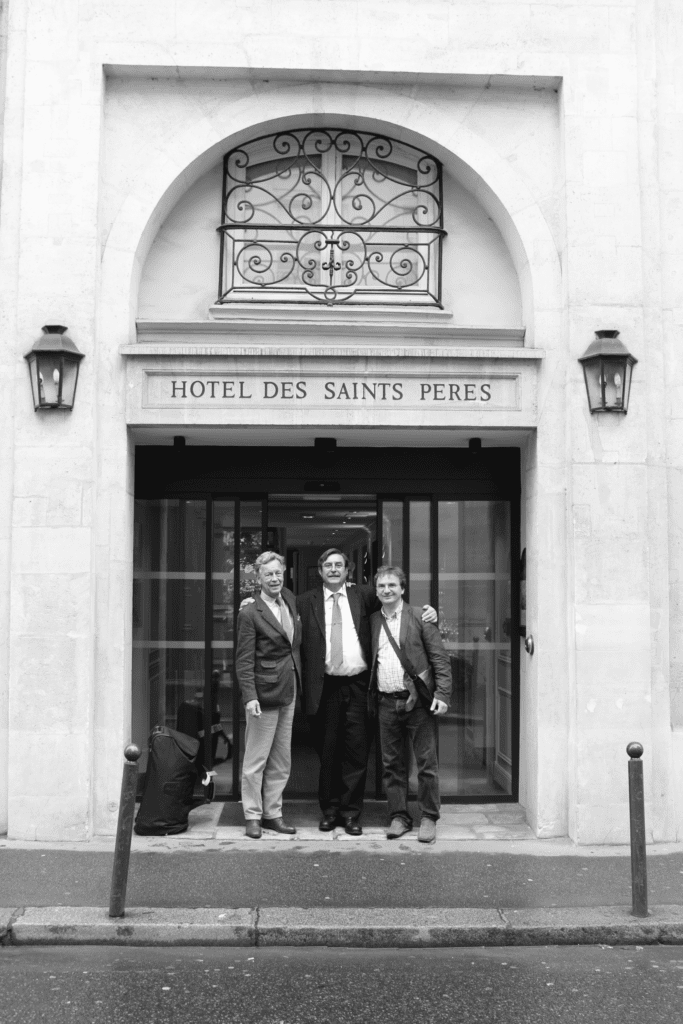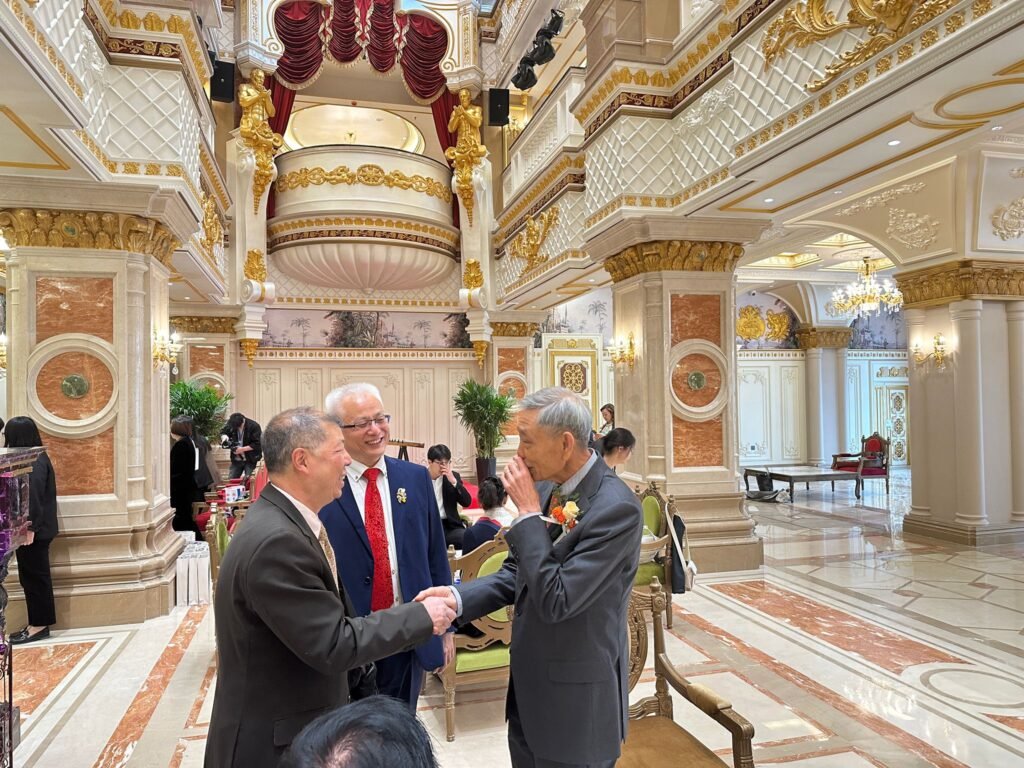A Palace in the heart of Vienna, Austria, 8th July 2024

In the inner courtyard, I was greeted by a statue of Saint George slaying the dragon. (https://www.art-tresorient.com/presse/le-dragon-occidental-et-le-dragon-chinois/)

TresOrient had the honour of being selected for the flooring of the corridors, staircases, and rooms with Aubusson knotted rugs. This commission spanned from 2016 to 2019, nearly four years of work, and required an entire workshop of specialised workers, designers, and draftsmen.
The Palace

Located in the very center of Vienna, it was built in 1720. Like St. Peter’s Basilica in the Vatican, baroque architecture predominates in this ensemble. It served as the headquarters of Deutsche Bank in Vienna. The current owner, a lover of art and Ferrari, has dedicated several years to restoring this 18th-century architectural gem. Built in Vienna, which was then the center of the Holy Roman Empire during a period of dynastic disputes, the fate of all Europe was decided here. Vienna would later become the capital of the Austro-Hungarian Empire.
This palace has witnessed and continues to witness XVIIIth century European history: Spain, the Netherlands, Italy, the Balkans…
Financial resources, passion, and the determination of the current owner and his team of decorators, architects, and historians were necessary to meet the magnificent challenge of restoring this palace.
Accompanied by the upholsterer Philippe and the decorator architect Otto, I admired the precious wood floors, wood paneling, and ceilings. During my six-hour visit, I discovered a thousand details, and surreptitiously, gold taps were skilfully installed in a bathroom.

In the library, a place where one can grasp the sensitivity of the owner, books on Ferraris held a prominent place but also featured books on the MoMA in New York and on Oskar Kokoschka, a Austrian expressionist painter. In this palace, where history, baroque, and modern art coexist, our rugs have found a harmoniously fitting place.
The Rug
The “conception”
Otto, the chief architect-decorator, Philippe, a French upholsterer, and Ewald, a decorator, “conceived” the rug during an autumn afternoon in 2016 in our shop in Paris.

The floral motif of the borders, the colour of the central part, and the creation of a narrow yellow-gold band separating these two parts were decided.
This band, a brilliant idea, enhances the clarity of the central and floral parts and visually increases the perspective of the corridors and highlights the baroque stairs of the palace.
This detail, a straight line over hundreds of metres, requires perfect execution of the rug, which, let us not forget, is handmade and artisanal.



The Manufacture
A full-scale design was then made (see rug catalogue) by decorator-architects, graduates of the Academy of Fine Arts in Jinan in Shandong, the city of the great Chinese poetess, Li Qingzhao (1084-1151). The weaving involved a workshop of nearly five people. Design adjustments were necessary, but the work was completed in 2019.


The Installation
This part was carried out mainly by the master upholsterer Philippe, assisted by his son Nicolaus, who came from Lille, France.

Installing handmade rugs of such large dimensions requires all the skill of an experienced upholsterer.
The few millimetres of differences in some portions become, thanks to Philippe’s magic skill, invisible. The installation of the rods on the risers, the placement of the underlay, and the protective covering on the central part of the staircase require ingenious solutions.



Personal Comments
This palace in the very centre of Vienna, which the current owner has brought back to life thanks to the work of architects, decorators, master upholsterers, and blacksmiths, carpenters. These experienced men and women, thanks to the owner, were able to once again exercise their talent and expertise for the restoration of this magnificent palace.
In a niche in one of the many rooms of the palace, an 18th-century wooden panel was displayed. It is a depiction of Joannes Nepomucenus, a martyr beatified in 1721; the building was constructed in 1720.
Welcomed by Saint George, my visit concluded on the meditation of a martyr, sacrificed for his precepts and his fidelity. This residence is filled with spirituality, presumably intended by the owner.

May God protect the place and its occupants!


